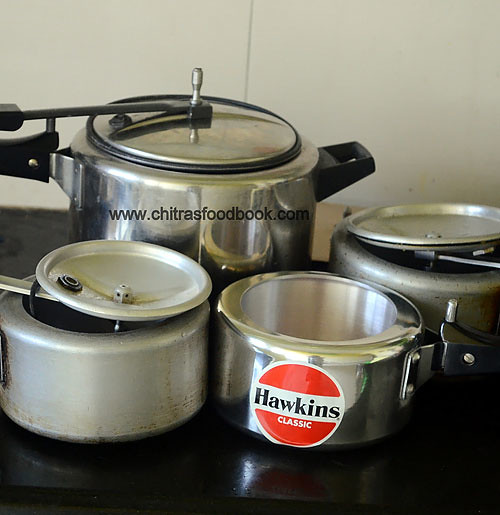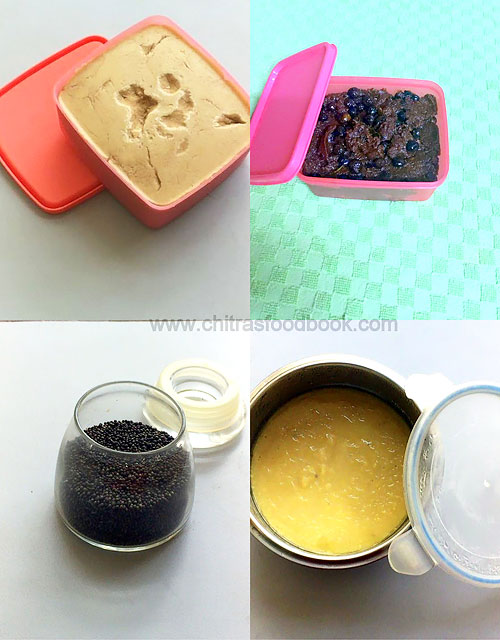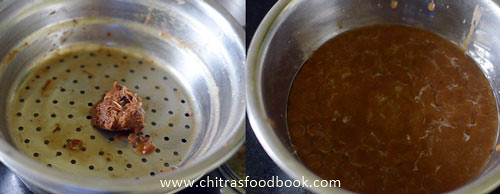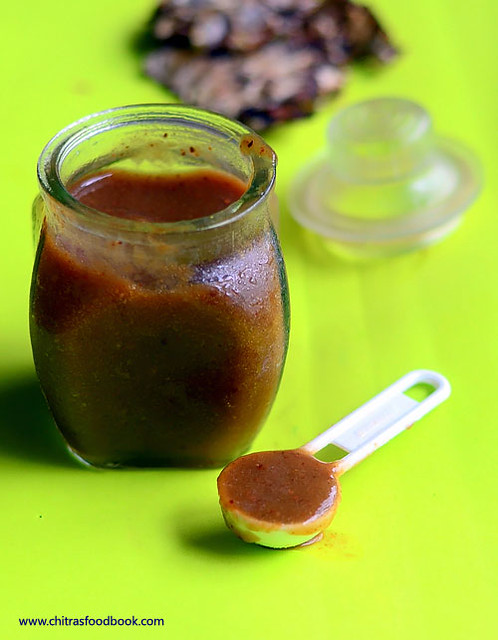Friends, this post is all about useful cooking tips for Indian working women, beginners in cooking, bachelors, stay at home moms with babies in hand and for house wives who wish to finish the morning chores quickly and easily without any tension .These pre-preparation ideas would help you feel relaxed and manage to do quick and easy cooking during the busy, hectic weekdays.
Recent days I have been getting mails to share some simple lunch menu ideas for busy weekdays by spending less time in kitchen. Very soon I will start a lunch menu series suggesting some easy and healthy Indian lunch recipes for daily cooking. Before that, I wanted to make a post about useful cooking tips & pre preparations to make the job easier.
As I had worked for an year after marriage, I have seen and heard from my colleagues about the difficulties in managing home and career.Time management plays a major role here. For me, there was no problem at all as I was in a joint family. My in-laws did all the household chores and supported us very well.In this present day nuclear family setup, many people does not get the luxury of moral & physical support of elders to share cooking and other household responsibilities. So it would be really tiresome and stressful if we don’t plan things ahead.
I hope these simple, handy tips and tricks would be helpful to make the kitchen chores easier and stress free. Don’t worry, these pre-preparations won’t eat your weekend’s relaxing hours. You may need to spend just 2-3 hours to finish all these works or you can get the help of your servant maid to finish this job quickly. This will save lot of time during busy weekdays.
Before going to this post, I must thank my friend Shalini for helping me to frame these points as she is regularly following these things. Love you lots dear !!. She also shared some pictures from her kitchen. I have made them as a collage and given below.
Friends, I hope this post would be useful to plan & manage things easier. Working women and bachelors, please share your valuable tips you follow in your daily cooking in the comments section. It would be of great help for the people who read this post. Thanks in advance. Ok, now lets see some smart cooking tips and secrets to be a super wife and mom.This post is with more & more of stories and essays. Please bear with me.
DISCLAIMER : All the points I have shared below is based on the ideas I got from my working friends. I have also gone through some websites and magazines for more tips. Please modify or skip the suggestions as per your wish & need. You need to have a refrigerator, pressure cooker and some good air tight containers to make & store the dishes.
SOME USEFUL GADGETS
According to me a 2 burner gas stove, 3 small pressure cookers, few ladles, mixing bowl and a mixer grinder is enough to cook even for 10 people. Pressure cooker is my biggest strength. It helps to cook any food quickly and easily. I have shared the pictures of my cookers above for your reference.
I use 3 Hawkins small sized pressure cookers ( 1.5 liters and 2 liters) and one 5 liter cooker. I use 2 of them for lunch preparation and 1 for cooking breakfast. I use the big sized cooker only for my guest. I will share how I use these cookers for quick cooking in my upcoming lunch menu series.
Pic courtesy – My friend Shalini
PLAN AHEAD
Make a weekly timetable for the menu according to your family's preferences. Keep a list of all the dishes you want to cook in the following week and write down all the required ingredients so that you can purchase all the groceries and vegetables as per the list.If you don’t like to spend time in grocery shopping, go for a monthly purchase.
Refer my
“Monthly Grocery list” post for the idea. You can buy vegetables once in 10 days and store them in refrigerator. I follow this every month to save my time spent in shopping.
Please check the links below for the grocery, fruits and vegetables pruchase from Amazon. I am completely dependent on Amazon during this pandemic lockdown. All the below are affiliate links. If you use this link to purchase the products, I would be getting a small percentage for sales. Thanks for your support.
Similarly you can also grind and keep batter for dosa varieties like Set dosa,
sponge dosa,
poha dosa etc. It will help you for sure. My friend Shalini's maid helps her to grind varieties of idli and dosa batters during every Sunday for the whole week's use.
Even though I am a house wife, I too grind all the batters during weekends and use it mainly for the week's breakfast because I don't want to hit my head thinking about breakfast recipes during busy morning hours. Generally I make Instant dosa varieties, Instant idli varieties like oats idli, rava idli, upma recipes like wheat rava upma, vegetable rava kichdi, millet recipes, Ragi roti, Phulka or stuffed paratha varieties for my dinner. I try to avoid consuming rice at night.
Check out my
Idli varieties post for varieties of idli,
dosa batter. Check out my
easy dosa batter recipe too ! For other options, you can make instant dosa varieties, upma varieties for breakfast or dinner.
MAKE ROTI DOUGH
Make roti dough well in advance and refrigerate it. The kneaded dough will remain fresh for at least 2-3 days. You can make use of this dough for making roti , poori and stuffed paratha. Remember to store in an air tight box. Take only the required quantity of dough from the box and immediately refrigerate the leftover dough. But try to use it within 3 days.
PREPARE THE SIDE DISHES
When we have idli, dosa batter in our hand, we start to hit our head for making side dishes. That’s quite natural. So prepare some side dishes like
tomato thokku without onion,
tomato thokku with onion,
onion tomato chutney,
garlic chutney,
Raw onion chutney,
Idli Podi/Gun powder, green chutney without coconut based on your preference and store in an air tight box. It will stay good for a week. You can use these chutneys as side dish for idli, dosa, appam and roti or use it as sandwich spread too.
I usually make onion tomato chutney and stock it for my daughter’s breakfast and lunch box. For roti, you can prepare side dishes like
capsicum-tomato curry, tomato thokku, pickles and even jam for your kids. You can even cook Dal for making dal tadka or dal curry and refrigerate for 3 days. If you love to have pasta, you can make white sauce & pasta sauce ahead and store them.
Check out my
50 chutney recipes for more ideas.
For quick lunch, you can prepare and store
Pulikachal paste/Puliyogare paste,
Lemon rice paste,
coriander thokku,
thogayal varieties, Vathakuzhambu paste and podi/powder varieties like
Dal powder/Paruppu podi, Dhania/coriander seeds powder, Angaya podi, Sundakkai podi, Poondu podi/Garlic powder, coconut podi etc.
Kuzhambu varieties like vatha kuzhambu, poondu kuzhambu, milagu kuzhambu, kara kuzhambu, tomato gravy, brinjal gravy stays good for even 2 -3 days with or without refrigeration. So you can make them once or twice in a week apart from sambar and rasam.
Check out my
30+ kuzhambu varieties post to get the links for the above recipes.
READYMADE BREAKFAST MIX
Roast rava and keep in bulk. It will help you to make upma quickly. You can also make
Rava/sooji upma mix,
Poha mix, pongal mix, rice upma mix in advance and store in the freezer. It helps you to make your breakfast or dinner quickly and easily. Always keep a packet of bread in stock for making quick sandwich or toast.
CHOP THE VEGETABLES AND FREEZE
Vegetables like carrot, beans, peas, cauliflower, sweet corn, cluster beans, spinach, broad beans can be diced or chopped & frozen for a week.If you want to use the vegetable for the next day morning, you can simply refrigerate the chopped veggies. Do not freeze them.
Usually I keep frozen peas and frozen corn always in stock. Grate 2 coconuts and store 3/4th of the quantity in a zip lock cover.Deep freeze it. Store the remaining coconut in refrigerator. Just thaw it for few minutes before use or use warm water to grind the coconut.
Take the required quantity of coconut, refrigerate it and keep the remaining in freezer immediately.
De-stem coriander, curry leaves and mint leaves and store in an air tight box. Mostly I use palak leaves during weekdays as it is easy for cleaning, chopping and cooking. During weekends, I buy other greens/Keerai varieties, clean them and store in a ziplock cover.Do not chop onions and store. It attracts more bacteria when its cut.
Apart from chopping veggies, you can make some lemon juice and store in a glass bottle, peel garlic cloves, Peel &finely chop ginger, peel small onions and keep them ready for usage. But remember to store the chopped vegetables in a clean zip lock cover and refrigerate.
COOK PUREES, PASTE & LENTILS
Cook toor dal or moong dal in large quantity, refrigerate/freeze and store in a box for 2-3 days use. Take the required amount and make sambar instantly. Soak beans like rajma, dried peas and chana for 8 hours and refrigerate them for later use.
You can easily cook a quick meal like pulao, biryani or gravies & even make a healthy salad with it. Sprout green gram and other legumes based on your liking and keep them in the freezer. So whenever you want to have some salad, you can semi cook and have them ready
.
Grind and keep tomato puree,
homemade tamarind paste,
ginger-garlic paste, onion paste, sauce varieties ready in hand.
You can also keep some readymade seasoning, green chilli paste
. Some people keep some sauteed, browned onions too. I have seen some of my friends making onion-tomato puree adding masala powders and keep the base ready for making North Indian gravies. If you have enough time in hand, you can even make two to three varieties of curries and refrigerate them.
Vegetables like potato, cauliflower, sweet corn and peas can be boiled in advance and refrigerated for later use. You can even cook pasta and store them in the fridge.
Keep curd, buttermilk,
paneer, cheese and other essential milk products ready in hand so that you can use it for raita, buttermilk/ Chaas, lassi, gravies and sandwich.
TO DO LIST
I have summarized the above points and shared a TO-DO list for weekend. Do this according to your preference and time in hand.
- Grind idli, dosa batter and other batters if grinding.
- Make chapathi/ roti dough.
- Soak pulses & lentils like rajma, chana/ kabuli, peas.
- Chop all the required vegetables. Make frozen peas and sweet corn.
- De stem green leaves/Spinach, coriander leaves, mint leaves and curry leaves.
- Cook toor dal and moong dal in large quantity for making sambar & dal for roti.
- Make Tamarind paste, Tomato puree, Puliyogare paste, Tomato thokku, homemade powders like dal powder, curry leaves powder, coriander leaves thokku, thogayal varieties, Lemon rice mix, Chutney varieties according to your choice. ( I have shared the links in the above sections. please check it)
- Make white sauce and pasta sauce for cooking pasta recipes.
- Prepare rava/sooji upma mix, poha mix, dosa mix, pongal mix.
- Make onion tomato base for North Indian gravies.
- Purchase week’s grocery and vegetables.
- House cleaning if needed.
Friends,I hope this post will be helpful to you. Thanks for visiting this page !!
Technorati Tags:
cooking tips for working women,
indian working women cooking,
cooking tips and tricks,
cooking tips for beginners,
cooking tips for indian working moms,
tips for working women to manage home,
working women cooking tips,
time management tips working women,
cooking tips for working moms,
smart cooking tips for working women,
cooking ideas for working women,
Tips for working women,
tips for quick cooking





















 q
q











